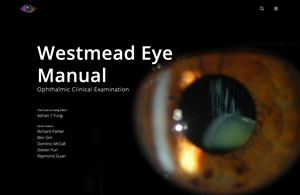13 Rhegmatogenous Retinal Detachment Special Scenarios
13.1 Rhegmatogenous Retinal Detachment: Re-detachment Surgery
13.2 Macular Hole Retinal Detachment
13.3 Retinoschisis Retinal Detachment
13.4 Optic Disc Pit Retinal Detachment and Maculopathy
13.5 Giant Retinal Tear Detachment
13.6 Retinal Dialysis
13.7 Macular Folds
13.8 Sickle Cell Detachment
13.9 Viral Retinitis Associated Retinal Detachment
13.10 Paediatric Retinal Detachment
13.11 Coloboma Associated Retinal Detachment
13.12 Inherited Retinal Dystrophies and Retinal Detachment
13.2 Macular Hole Retinal Detachment
Macular holes may accompany rhegmatogenous retinal detachment (Figure 13.2.1A). They can be the cause of the detachment, such as in myoptic traction maculopathy. They can also occur secondary to a rhegmatogenous retinal detachment that has developed proliferative vitreoretinopathy with subsequent shortening of the retina.
The main surgical principles are:
- To relieve antero-posterior traction
- To free all epi-retinal and subretinal tractional forces
- To enhance retina-retinal pigment epithelial adhesion
1. Elevation of the Posterior Hyaloid (Posterior Vitreous Detachment)
This critical step must be meticulous particularly in high myopes, who are prone to have vitreoschisis. This can mean that a layer of residual vitreous remains adherent to the retina even after apparent elevation of the posterior hyaloid. Triamcinolone acetonide is suggested for visualizing the vitreous.
2. ILM Peeling
This is more difficult than for a standard idiopathic macular hole surgery because of the mobility of the detached retina. Staining with Brilliant Blue G or Indocyanine Green (ICG) dye is recommended but avoid subretinal migration of the dye through the macular hole. One optional technique to protect the subretinal space and also to provide an element of counter traction is to insert a perfluoro-n-octane (PFO) bubble at the disc then roll it over the hole (the bubble must be adequately sized such that it is significant larger than the hole and at a low risk of subretinal migration). The bubble can give countertraction and also shield the subretinal space during instillation of dye. Some surgeons will peel under a PFO bubble, injecting the dye between the retina and the PFO.
A pinch and peel technique works well for peeling ILM in detached retina. Gently press down on the retinal surface with the forceps. Grasp the ILM by the corner-edge of the forceps jaws. In presence of highly elevated retina, the forceps gently drags the ILM posteroanteriorly.
3. Insertion of Tissue
There is limited evidence that insertion of tissue into a large full thickness macular hole may improve closure rates. Options include an inverted ILM flap, lens capsule or free retinal transplant. The inserted tissue is trimmed to a slightly larger size than the hole, and kept in place with viscoelastic or whole blood.
All rights reserved. No part of this publication which includes all images and diagrams may be reproduced, distributed, or transmitted in any form or by any means, including photocopying, recording, or other electronic or mechanical methods, without the prior written permission of the authors, except in the case of brief quotations embodied in critical reviews and certain other noncommercial uses permitted by copyright law.
Westmead Eye Manual
This invaluable open-source textbook for eye care professionals summarises the steps ophthalmologists need to perform when examining a patient.

